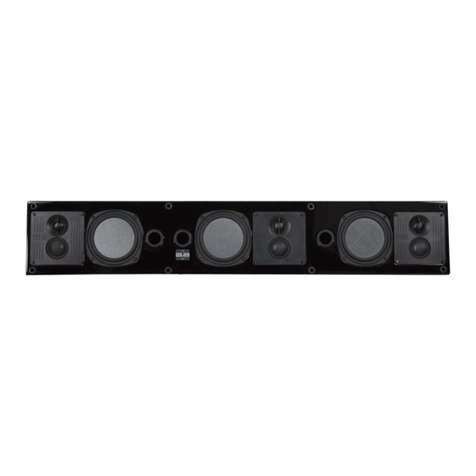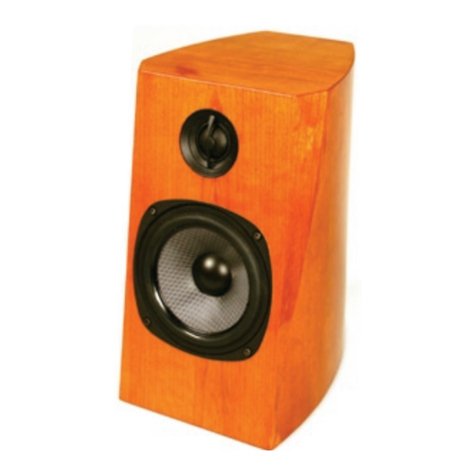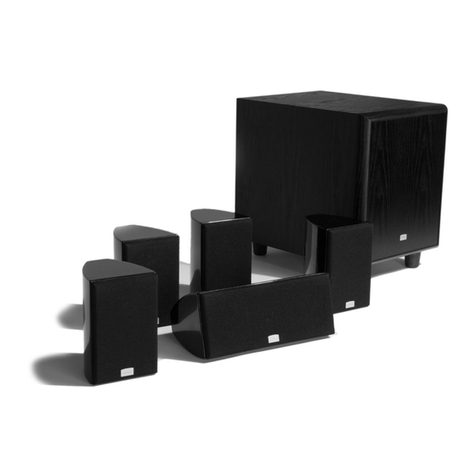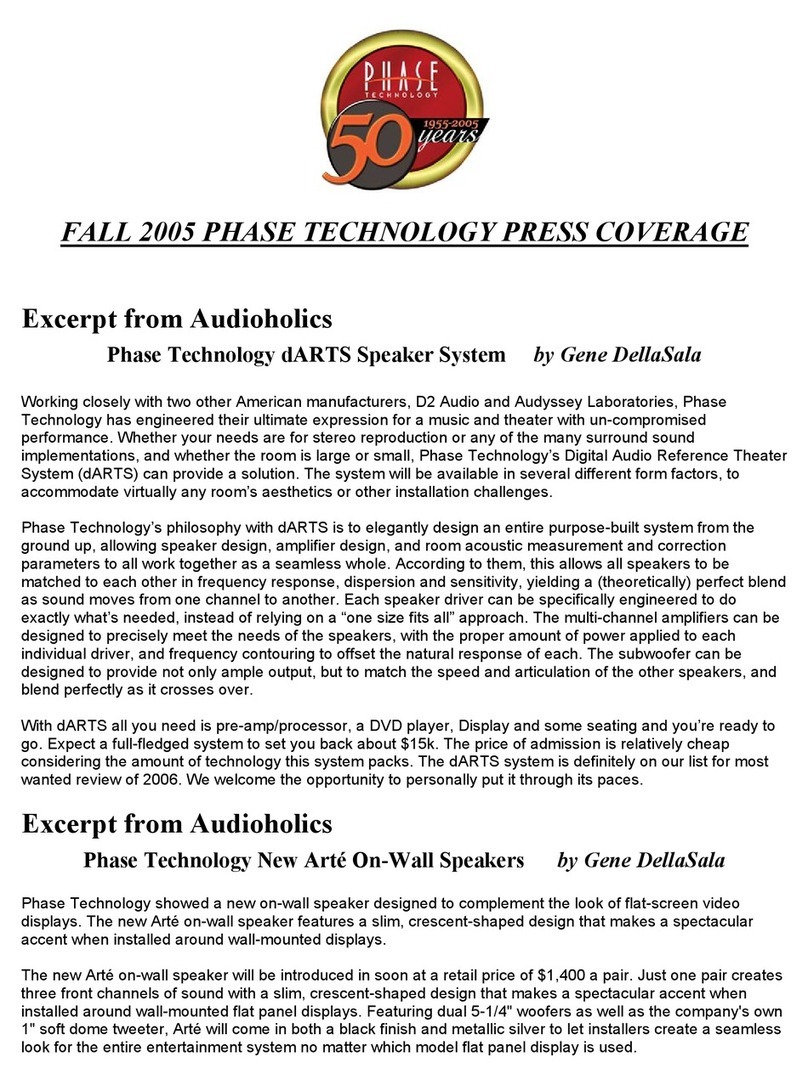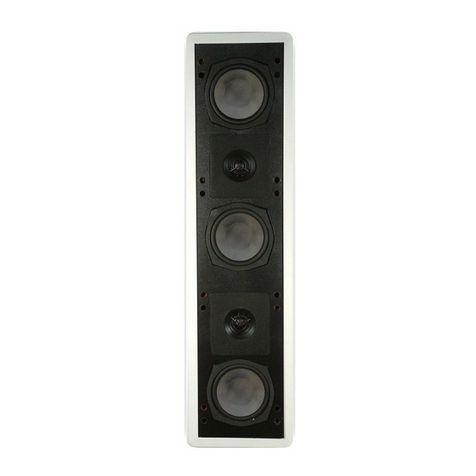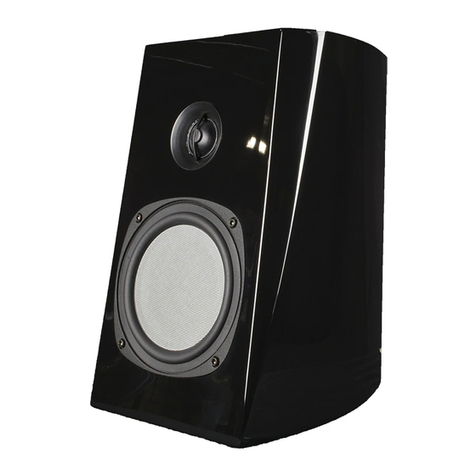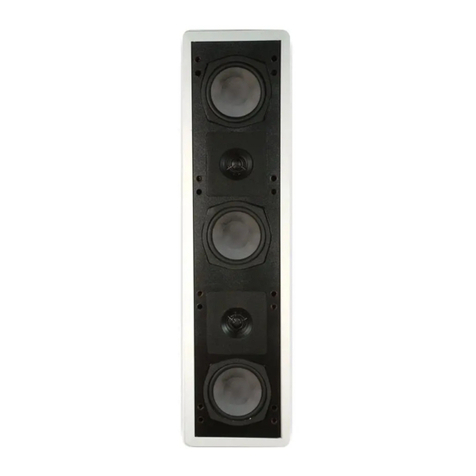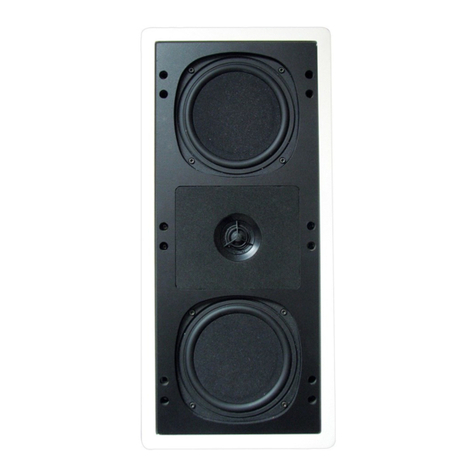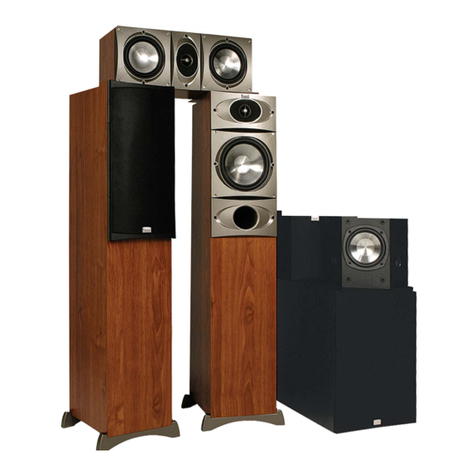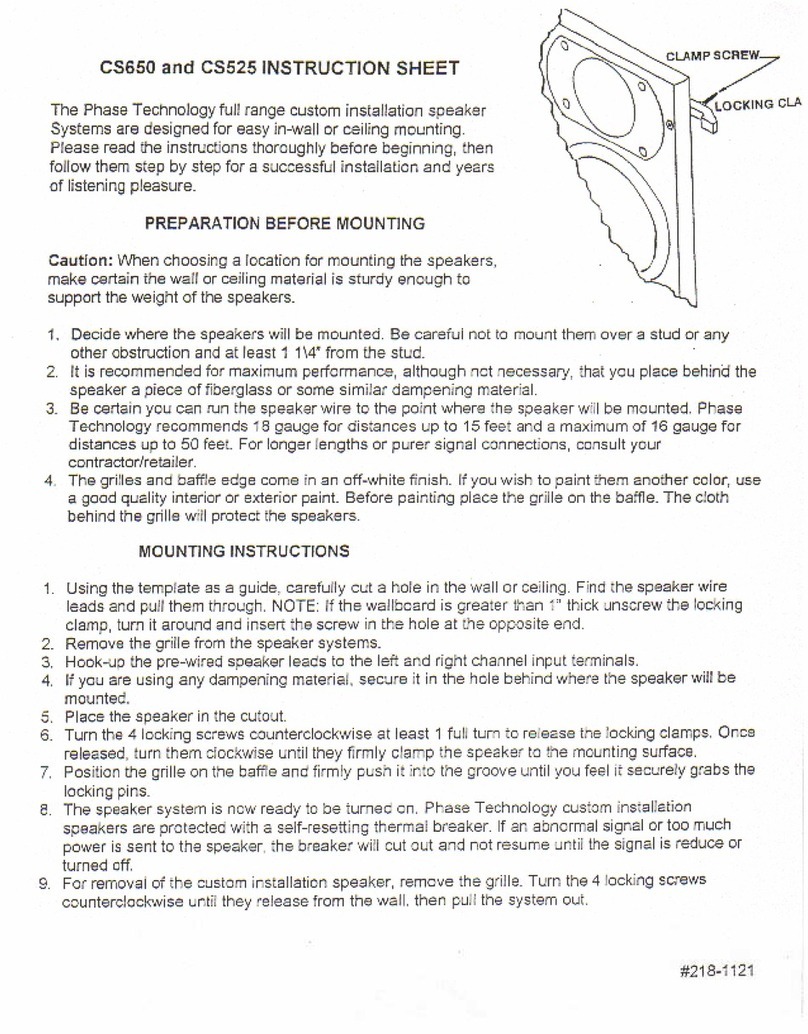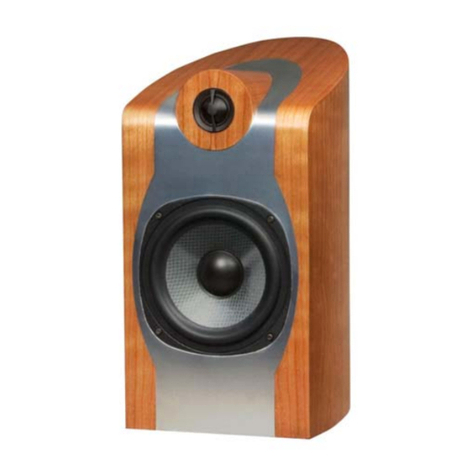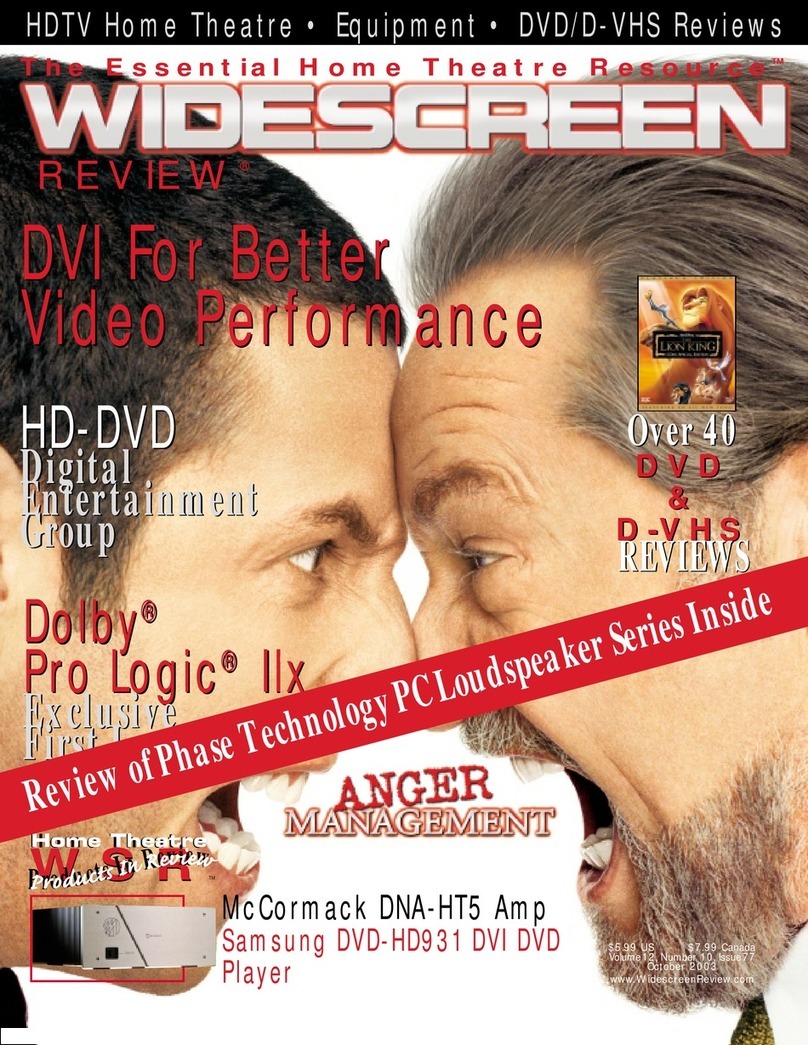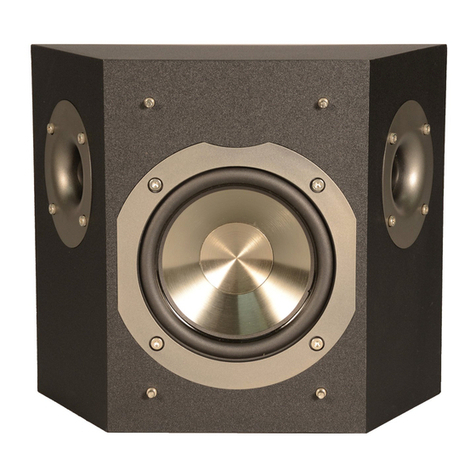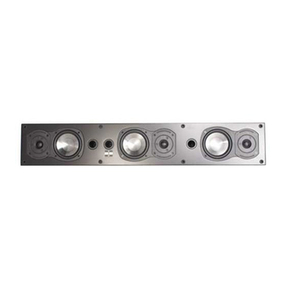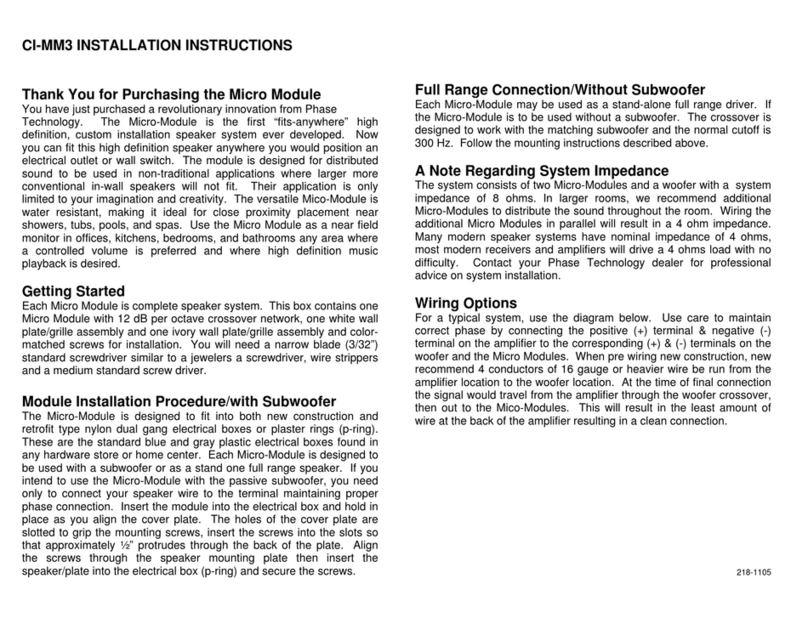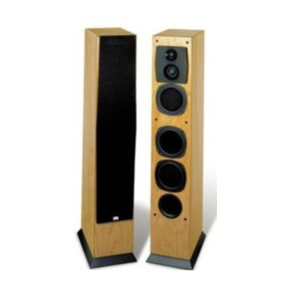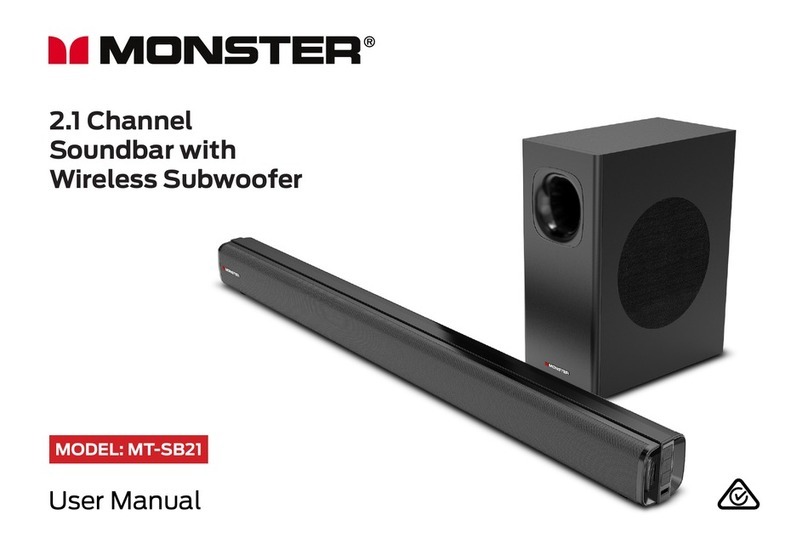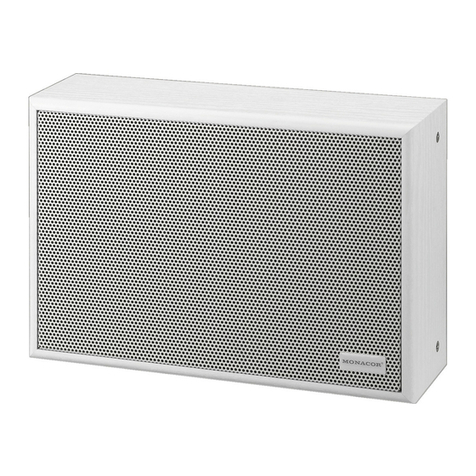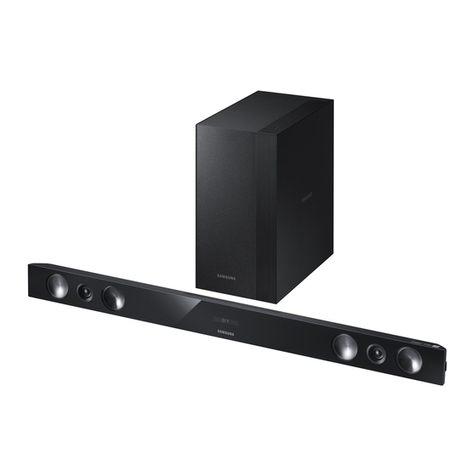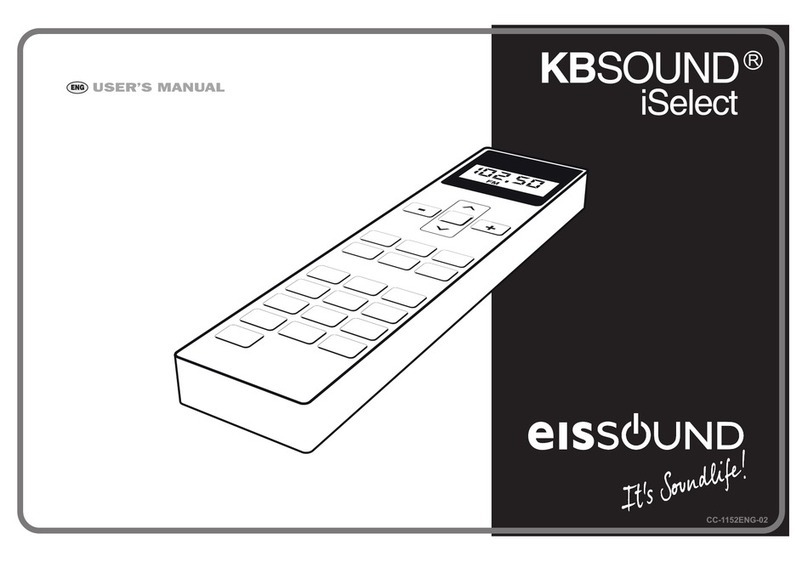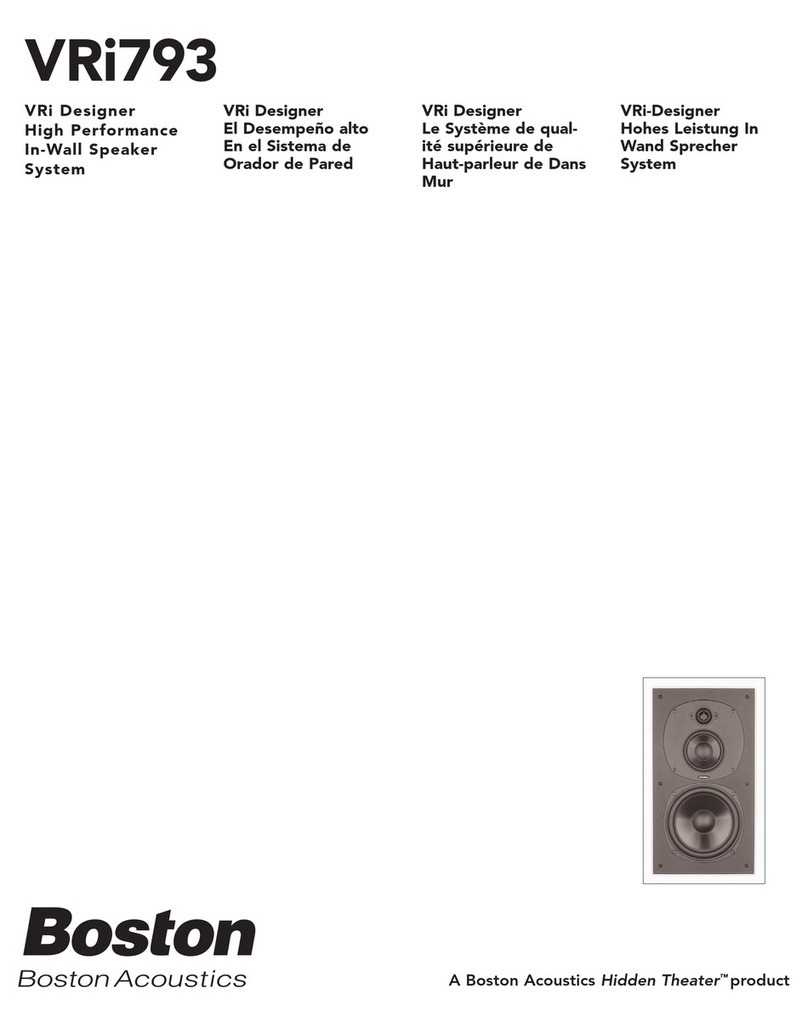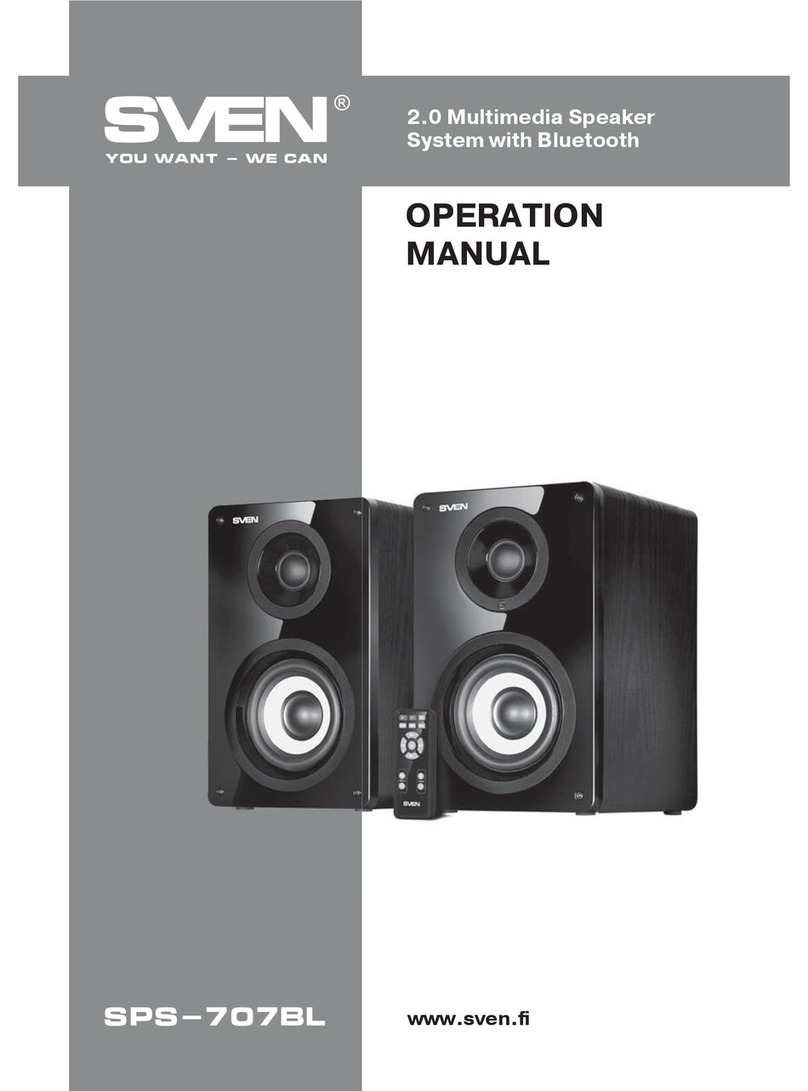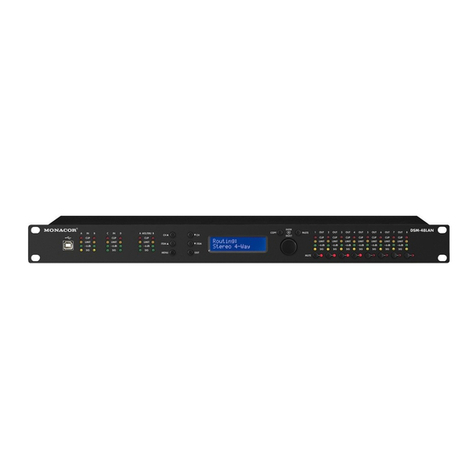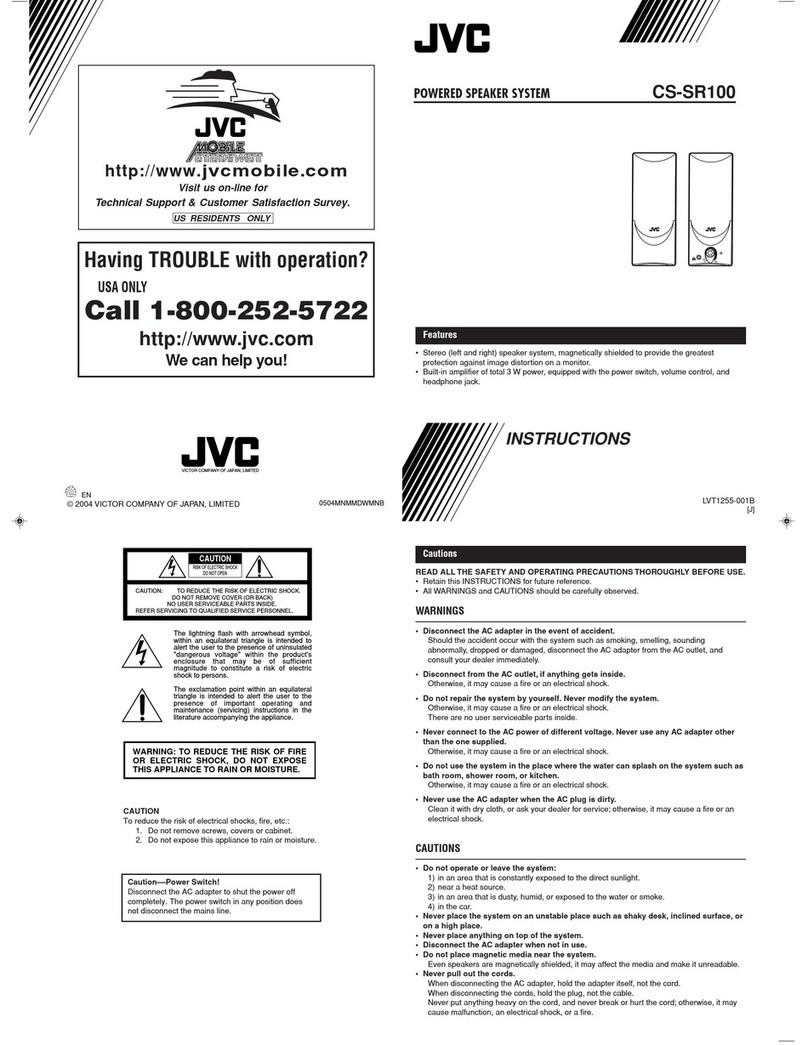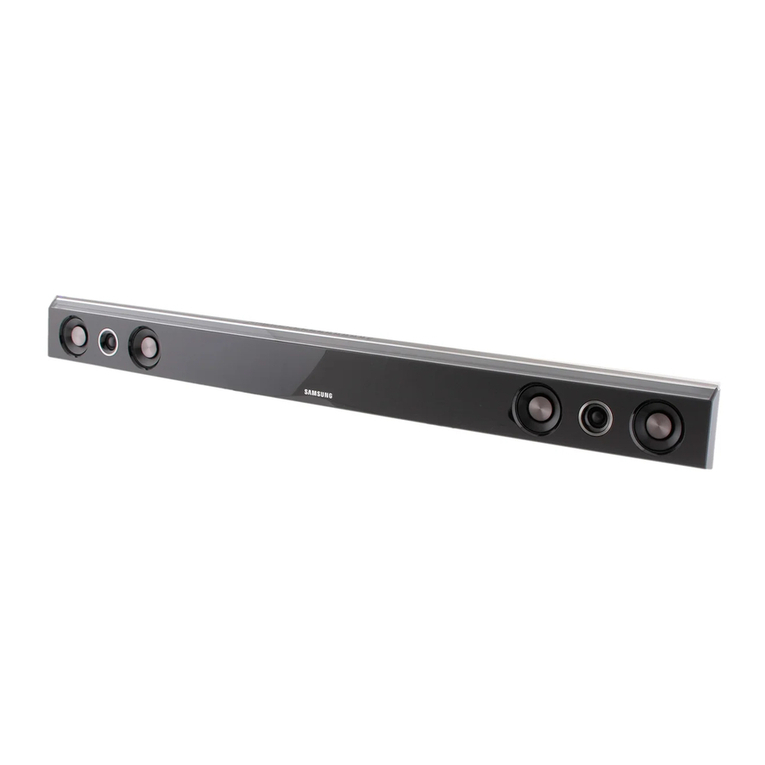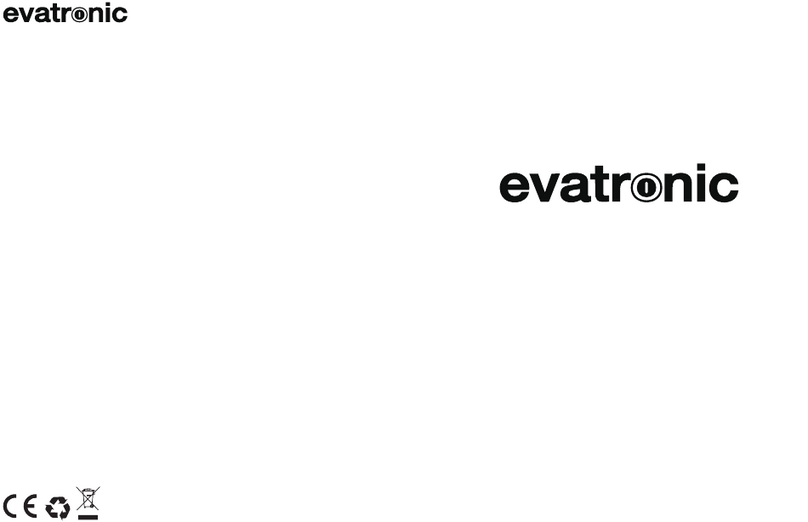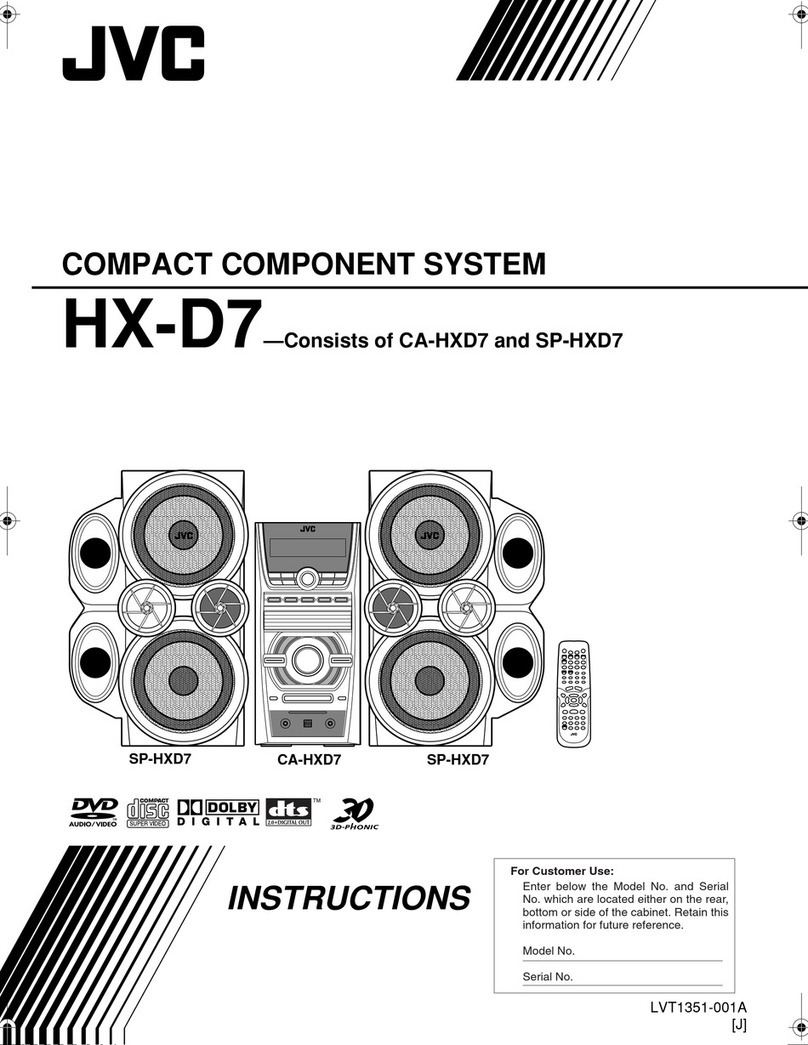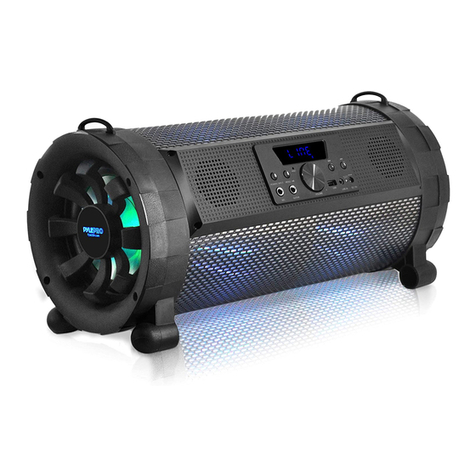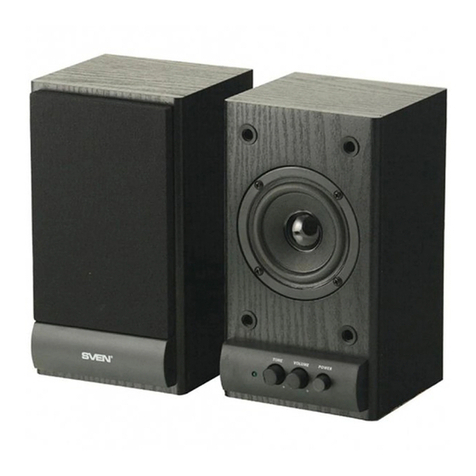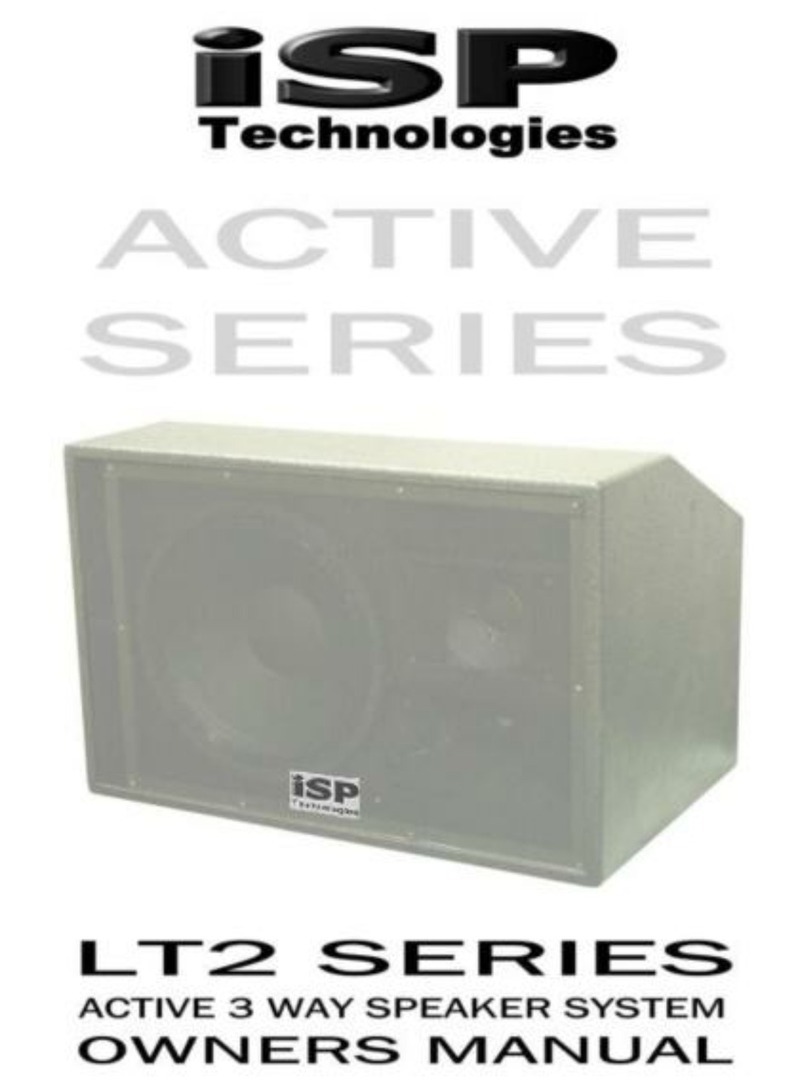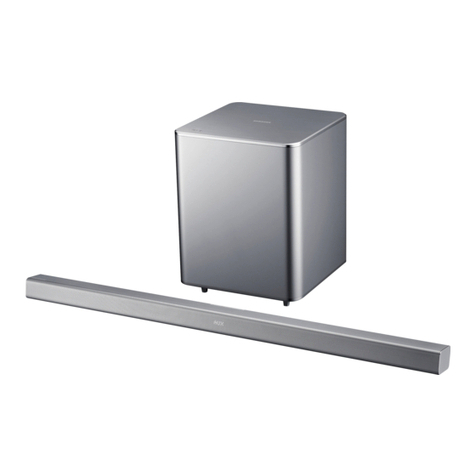
The CI-60VI (pictured left) was used as one of the rear sur-
rounds with the larger CI-100II (pictured right) up front.
evidence that real “high definition” began with
audio—not video.
Every driver in every Phase Technology
product is designed in-house through months
and even years of careful research. Once a
driver meets the meticulous demands of the en-
gineering department, the actual product will
slowly come to life as the crossover network is
built and an enclosure is added.
Looking at the CI-Series speakers, the most
obvious visual difference is in that of the mid-
range (mid-woof) driver. What appears to be a
flat piston driver is actually a unique, Rigid
Polymer Foam (RPF) cone, with a Kevlar com-
posite skin that further reinforces the solidity
of the driver. A foam-like material is added
solely for cosmetics. The basket is simple and
solid and the motor structure is well matched.
In our installation and review we chose CI-
110II speakers for the Left/Center/Right, along
with CI-60VIs for the rear surrounds. Each of
these speakers incorporates the aforementioned
mid-woof, with the CI-110II using a pair to flank
the tweeter.
The soft-dome tweeter in each of the CI-
Series speakers features a variable axis enclo-
sure that allows the tweeter to be directed into
the listening area for increased on-axis re-
sponse. The CI-110II’s tweeter is surrounded
by a Unicell sound damping material. This
sponge-like material isolates the tweeter.
The front baffle of the CI-110II is constructed
of a one-inch solid piece of MDF. This acts to
eliminate unwanted resonances—a constant
battle for in-wall speakers. The crossover net-
work on each speaker in the CI-Series is sim-
ple and the use of high quality components is
apparent. This is a common shortcut for man-
ufacturers of traditional loudspeakers and in-
wall speakers alike. Ultimately, this is where
average speakers get left behind. When com-
bined with excellent drivers, like those in the
PhaseTech CI lineup, the result is astonishing.
There are other features that I consider
unique, but they are better discussed in the
Installation section of this review.
Moving right along, we get to the in-wall
subwoofers of the CI-install. A few years ago
in-wall subwoofers started creeping into the in-
wall scene. The problem was none of them
were very good. The single biggest obstacle for
all in-wall speakers comes with the speakers’
interaction with the cavity (or wall) in which it
is installed. Because it is impossible to predict
the internal volume of a given install, an aver-
age is used. Some manufacturers even offer en-
closures or self-contained designs.
The proper enclosure type and size is criti-
cal with subwoofers. And with an internal vol-
ume of over one foot needed in most cases,
there are obvious boundaries created between
sheetrock and stud bays.
When PhaseTech was developing their
IW-200 dual eight-inch in-wall subwoofer, they
tuned it to a prefabricated enclosure. The IW-
EB 200 is tall and slender, designed to meet
the cubic volume requirements of the dual
eight-inch woofers.
The IW-200 in-wall subwoofer uses a pair
of eight-inch Mica/Graphite woofers acting as
one. An outboard amplifier, the P200 delivers
a continuous 200 watts of power (300 watts
peak) to the drivers and also provides crossover
and attenuation functions for the sub.
The P200 amplifier is very slim and rather
straightforward in its application. Crossover and
gain (volume) functions are located on the front
panel, along with phase adjustment. Around
back, low level inputs and high level outputs
make for simple connectivity. There is also a
switch to select the amplifier Mode, sub, LFE
or full-range and an attenuation of –3dB to +6dB
to aid in tuning the woofer to the room.
Installation/Setup/Ease of Use
It’s an uneasy feeling when you approach
your spouse about cutting large holes into the
walls of your new home. Add to that the re-
quest for assistance to do so combined with the
inherent challenges of installing and pulling
wire in an existing construction environment
and you’ve got the makings of a stress-cake.
Nevertheless, I began bringing in my old
trade tools to get the job done. While in the end
I will tell you that this installation was relatively
straightforward, I strongly recommend con-
sulting a professional installer for the job.
The first step in the installation of the CI-
Series ensemble was to determine speaker
placement. There are a number of factors to
consider here. The size and type of display,
along with where it would be placed in the
room was critical. Then came determining the
primary listening positions and lastly, locating
the stud-bays. Each factor required a bit of
give and take. We knew that while we wanted
the IW-200 on the front wall, we wanted it away
from the corner of the room to prevent load-
ing of low frequencies.
Using my trusty stud-finder and pencil, I
went to work mapping out the skeleton of the
room. Another potential obstacle was that the
main wall, or front of the room, is an exterior
wall. This gives six inches of depth rather than
the four-inch standard of an interior wall, and
added issues of insulation and reinforcements.
The last obstacle was in the installation of
the CI-110II in a horizontal position to act as
the center. This required notching the studs, as
the width of the speaker was greater than the
14-inch stud-bay we were working in.
Once the cuts were made for the CI-Series
speakers, pulling the wire to each location
was relatively simple. We cut one large open-
ing for the IW-EB 200 subwoofer enclosure,
then simply attached the drywall section to the
enclosure once it was in the wall and cut a sec-
ond opening for the actual IW-200 woofer.
We applied mud to the seams to fill the gaps
and sanded it several times until it blended with
the wall. (We actually wound up repeating this
process when we decided to add a second
IW-200 subwoofer.)
We wired the walls with Monster Cable 12-
gauge shielded speaker wire. An overkill to be
certain—but way necessary for maximum
cool factor.
Getting to the actual installation of the CI-
Series was a pleasure. The CI-110II speakers are
relatively large and heavy speakers by them-
selves. My concern from the get-go was that there
would be considerable internal loss due to the
massive power I was planning to put to them
by way of my Parasound HALO amplifier.
HDTVETC
magazine
•
SEEN IN Spring 2004
